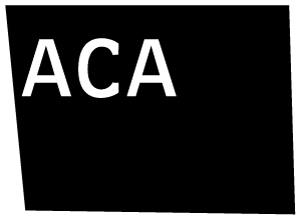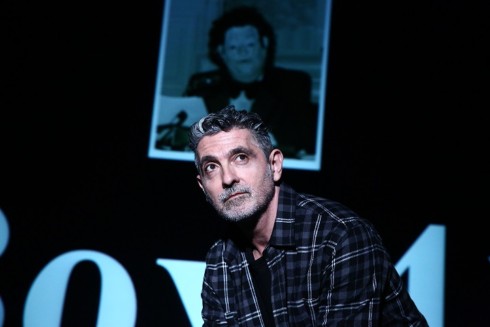Residency Dates: October 11, 2020 - October 31, 2020
Application Deadline: June 30, 2020
Ain Gordon Community Outreach – Via Zoom | Thursday, October 22, 2 PM Click here to register for this free program.
Ain Gordon is a Pabst Endowed Chair for Master Writers
Ain Gordon is a three-time Obie Award-winning writer/director/actor, a two-time NYFA recipient and a Guggenheim Fellow in Playwriting. Gordon’s work focuses on marginalized/forgotten stories and the invisible players in inhabiting that space.
Recent projects include Radicals In Miniature: a series of requiems to personal icons of the 70’s & 80’s premiering in 2017 at Baryshnikov Arts Center (NY) and Vermont Performance Lab plus 2018/19 touring to International Festival of Arts & Ideas, Quick Center, and Connecticut College (all CT), Williams College and The Yard (both MA); 217 Boxes Of Dr. Henry Anonymous: culminating a two-year residency at the Historical Society of Pennsylvania focused on Dr. John Fryer who, in 1972, disguised as Dr. Anonymous opposed the American Psychiatric Association’s classification of homosexuality as a disease premiering in 2016 at the Painted Bride (PA) plus 2018 performances at the Baryshnikov Arts Center (NY) and projected 2019 productions at Transylvania University (KY) and the Center For The Art Of Performance UCLA (CA); and Not What Happened: a contrapuntal duet for two people that never meet – the historical re-enactor and the woman she portrays – premiering in 2013 at the BAM Next Wave Festival (NY), with touring to Krannert Center (IL), Flynn Center (VT), etc.
Collaborations as Director: with Sō Percussion presented at the Walker Art Center (MN), BAM Next Wave Festival (NY), River To River (NY), and Philadelphia Fringe, etc; with Samita Sinha at American Dance Institute (MD) and PS122 COIL Festival (NYC); with Emily Johnson/Catalyst Dance at Northrop (MN), NYLA & Performance Space 122 (NY), On The Boards (WA), and ODC (CA), etc; with Bebe Miller at the Wexner Center (OH), Myrna Loy Center/Helena Presents (MT), and Bates Dance Festival (ME), etc; with David Gordon at American Repertory Theatre (MA), American Conservatory Theater (CA) and American Music Theatre Festival (PA).
Gordon appeared in the original Off-Broadway cast of Spalding Gray: Stories Left To Tell and toured the production to UCLA LIVE (CA), Portland Institute for Contemporary Art (OR), ICA Boston (Elliot Norton Award nom), the Walker (MN), and New Territories (UK), etc.
Gordon is a former Core Writer of the Playwright’s Center (MN), twice held the post of Visiting Artist at the Pew Center for Arts & Heritage (PA), was a 2014 Artist-In-Residence at NYU Tisch School of The Arts, and Resident Artist at The Hermitage (FL), etc. Gordon is Co-Founder of the Urban Memory Project and has been Co-Director of the Pick Up Performance Co(s) since 1992. https://www.aingordon.nyc
Residency Statement:
My work interrogates the ruthless editing machine we call “history.” I seek to annotate the cultural record by turning a spotlight on figures swept (or forced) to the margins of public memory. Whatever trace these figures/stories leave is often too incomplete for traditional-form history. Theater may enter those gaps – it does not require a factually unbroken chain.
So, I source real lives for live performance, but I am not a documentarian. I seek stories that have left enough trace to tantalize but been enough disappeared to offer me permission. I must be honest when accessing other people’s stories, I want to write what I want to write – the moral turf between honoring the fragmentary truth that spurred me and inventing the theatrical container that fulfills me as a “maker” is frighteningly hard to locate.
I am currently two-works along in a multi-play cycle rooted in 15 years: from 1967’s Summer of Love (not everyone’s love) to the first time the American mainstream press printed the word “AIDS” in 1982/3. 15 years in which change barreled forward then reared up in a sudden, panicked, mournful halt.
The first of these works was Radicals In Miniature, a series of textual/sonic odes to personal icons impacting “downtown” (alternative) culture in the late 1970’s/early 80’s. Many were felled by the disease that capped the era. Others couldn’t navigate the winnowing force of the latter 80’s “professionalizing” what were once creative margins. Still others never imagined translating their personal radicalism for public consumption – they disappeared when their “life-performance” ended.
The second was 217 Boxes Of Dr. Henry Anonymous. In 1972 Dr. John Fryer donned an oversize tuxedo and rubber joke shop mask to become Dr. Henry Anonymous insisting homosexuality was not a mental disease but who was Dr. Fryer? Researching this work, I combed Fryer’s 217-box archive at the Historical Society of Pennsylvania, unearthing three figures from his life; asking each to draw a portrait of the man behind the mask.
(Let me interject here to say I categorize Radicals In Miniature as a “piece” and 217 Boxes of Dr. Henry Anonymous as a “play.” I am not hierarchical about these forms, they each have inherent demands and permissions that I enjoy or loathe. I work among them).
I am seeking textual theater artists (playwriting to performance or any self-designated territory in between) who utilize non-fiction history as source material. “History” I am defining as any event that has already transpired – this can include autobiography, oral history, interviews, correspondence, archival sources etc.
– Where do you sit in a story that (supposedly) isn’t about you?
– What are the moral ramifications of including other people’s lives in your writing?
– Where do you fit as a generative artist inventing theater amid the pre-existing parameters of a documented inspiration?
– What is the relationship between the density of “real-life-time” VS what an audience can digest in “performance-time?”
– What do you owe to the specters that inspire you?
– How much of what you know/research/learn about your source material actually needs to be onstage in order to satisfy the need to make visible what has been obscured – and still make theater?
Our actual schedule will depend on who signs up.
I imagine daily individual sessions around material being developed and (perhaps a few times a week) group sessions reading work-in-process followed by moderated discussion.
If individual participants are up for showing work in more extensive formats (ie if we have solo artists who perform their own work) followed by moderated discussion – that will happen too.
I will also share documentation of some of my past works, NOT as ideals, purely as a launch for conversation around inherent challenge, promise and pitfalls. These may offer us the opportunity to all look at the same thing and note our differing perspectives without impacting the feelings of an artist still in process (the works are done so I am no longer vulnerable in that way).
Application Requirement:
Prospective Associates should send:
- A bio (one page maximum, PDF)
- An Artist Statement: what do you write about and why? (one page, PDF)
- A Residency Statement: goals or interests or aesthetic questions related to the residency and the use of non-fiction source material (one page maximum, PDF)
- A work sample (20-page PDF or 10-minute video online via link – either be 10 min or provide cuing timing). Please note completion date and any production history.
- A full-length script (PDF). Please note completion date and any production history.
Residency Fee: $900
Includes a $100 administration fee, weekday meals and housing; does not include artist materials, transportation, or weekend meals.
Scholarships / Financial Assistance
Only accepted Associate Artists may apply for financial assistance.
For details, please visit the master artist details page.

